First of all, Welcome Onboard Dog Owner!
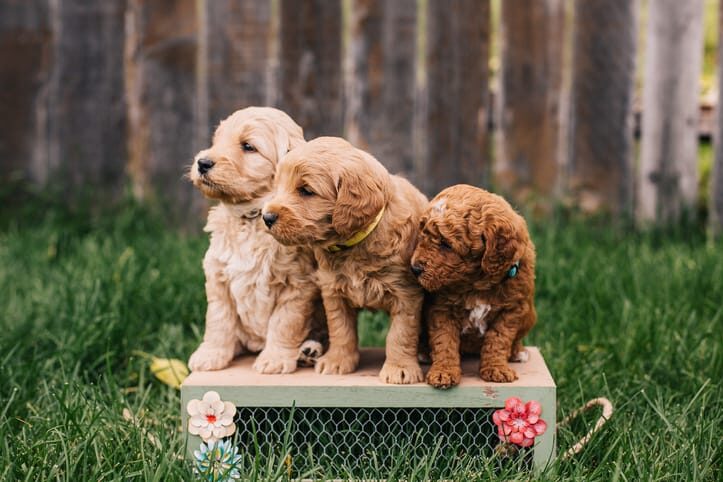
Congratulations on deciding to add a wonderful, fluffy Doodle to your life! The journey to finding the perfect companion starts not with a cute picture, but with thorough research. Asking the right questions is the key to ensuring you bring home a healthy, well-adjusted puppy from a responsible breeder.
1. What health tests have BOTH parents passed?
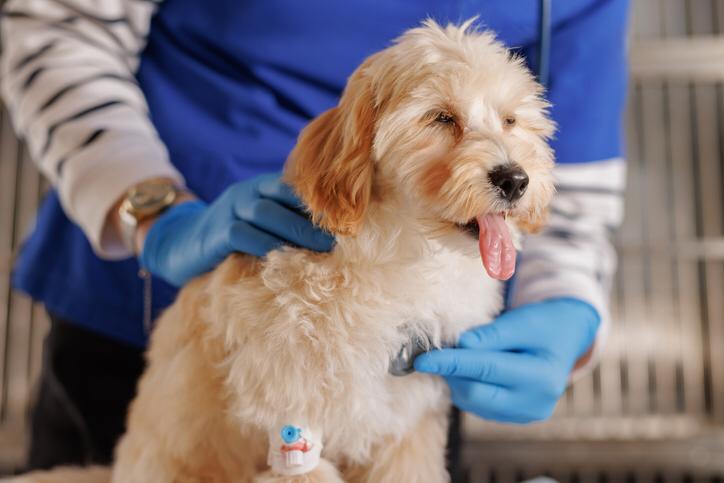
A reputable breeder prioritizes the long-term health of their puppies, which begins with thoroughly testing both the mother and father. For Poodle crosses, you must ask for concrete, written proof of official testing, not just a verbal assurance. Key areas include structural evaluations like OFA (Orthopedic Foundation for Animals) or PennHIP for hips (and sometimes elbows), which screen for debilitating joint diseases common in larger breeds. You should also see recent CAER (Companion Animal Eye Registry) eye exams to check for heritable vision issues. Finally, specific DNA panels are critical, testing for breed-relevant genetic conditions such as PRA (Progressive Retinal Atrophy), vWD (von Willebrand’s Disease), DM (Degenerative Myelopathy), and ichthyosis. Ask for links or PDFs to official, publicly searchable registries like the OFA or PawPrint Genetics. A good breeder should be thrilled to walk you through every result and explain why these specific tests were chosen for their lines.
2. How do you manage inbreeding and genetic diversity?
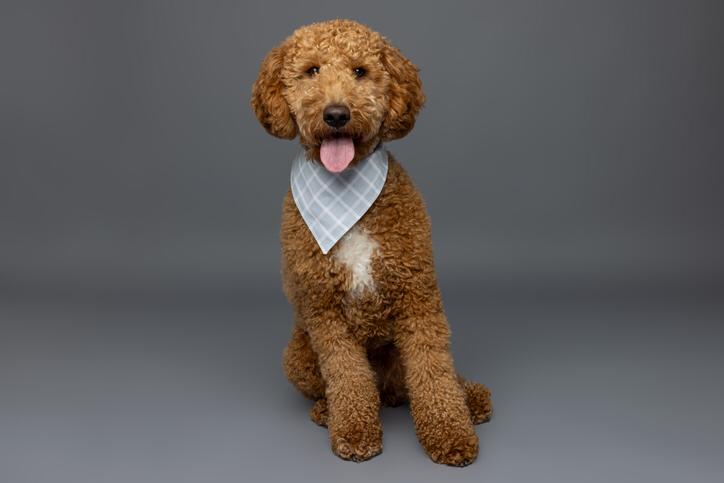
The popularity of Doodles, especially those with “rare” or specific coat colors, has led some breeders to compromise on genetic diversity through tight matings to achieve a trendy look. You need to understand how the breeder avoids this genetic bottleneck. Ask for the planned litter’s Coefficient of Inbreeding (COI), a percentage that estimates the probability that two alleles are identical by descent. A lower COI indicates a healthier level of genetic variation, which can directly affect a dog’s resilience against disease and overall vigor. Responsible breeders meticulously track pedigrees, rotate stud choices from diverse lines, and actively prioritize health and genetic stability over passing fads or coat color trends. If a breeder dismisses this topic or says they “don’t worry about that,” it’s a significant indicator that your potential puppy’s future health and hardiness might be at risk.
3. What’s your temperament goal and selection process?

A simple “friendly” isn’t a breeding plan; a dedicated breeder has a specific temperament goal that aligns with the typical Doodle purpose, to be an adaptable, confident, and stable family companion. Ask the breeder exactly which traits they are actively selecting for or against. This includes concepts like biddability (how willing the dog is to work with a handler), startle recovery (how quickly they recover from being scared by a loud noise), and their general sensitivity to people and environments. Do they perform structured temperament testing on the puppies, such as the Volhard or CARR evaluations? These tests help objectively measure a puppy’s behavioral tendencies, allowing the breeder to make informed, non-emotional decisions when matching puppies to families. Always try to meet at least one of the puppy’s parents or close adult relatives to get a realistic preview of the likely adult energy level, sociability, and overall nature you can expect.
4. What early socialization and enrichment do puppies receive?
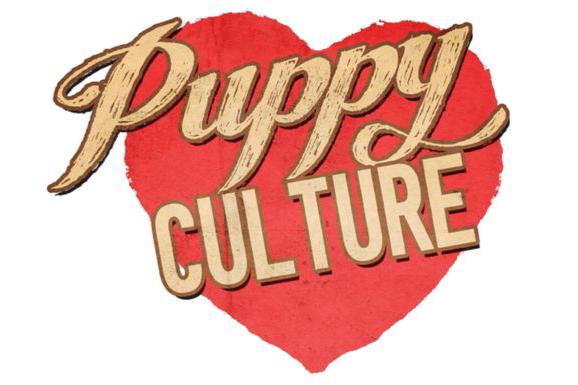
A puppy’s critical socialization window is before it leaves the breeder, making the early enrichment program vital for a confident and balanced adult dog. Look for evidence of a structured, intentional program, such as Puppy Culture or ENS (Early Neurological Stimulation), both of which are designed to build better stress-coping mechanisms and learning ability. The puppies shouldn’t just be in a pen; they should be exposed daily to a variety of novel surfaces (wood, tile, grass, carpet), sounds (vacuum, blender, thunderstorms on a speaker), and different gentle people of varying ages. Furthermore, ask about practical exposure, such as starting crate training for short naps, small car ride experiences, being handled on a grooming table, and regular nail trims. A puppy that is pre-exposed to these elements transitions into a new home much faster, is less likely to engage in destructive behaviors out of stress, and is ready to tackle new learning with confidence.
5. How do you predict size and coat type?
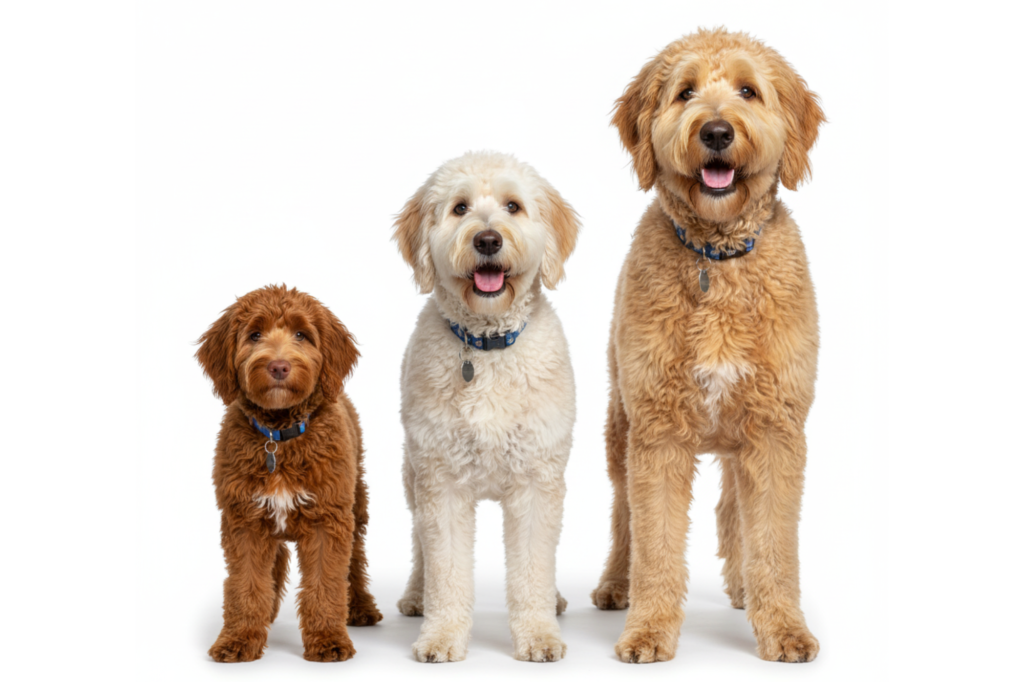
Be wary of vague or absolute guarantees, as the terms “Mini,” “Medium,” and “Standard” are often marketing labels with no standardized definition across different programs. To get a realistic expectation for your future dog, ask for the adult height (measured at the withers) and adult weight of both parents. A responsible breeder will also share the litter averages and a realistic size range from their previous, similar pairings. Regarding the coat, ask for a clear explanation of the puppy’s current coat genetics, specifically whether they carry the furnishings gene (the genes for the shaggy, low-shedding beard and eyebrows that define the “Doodle” look) and the degree of curl they are likely to have. Even though multi-generational (F1b, F2b, etc.) crosses are often marketed as “non-shedding,” no coat is truly hypoallergenic, and surprises can still happen. For planning purposes, always choose a crate, vehicle, and living space accommodations that suit the largest size prediction for your puppy.
6. What is the grooming plan you expect buyers to follow?
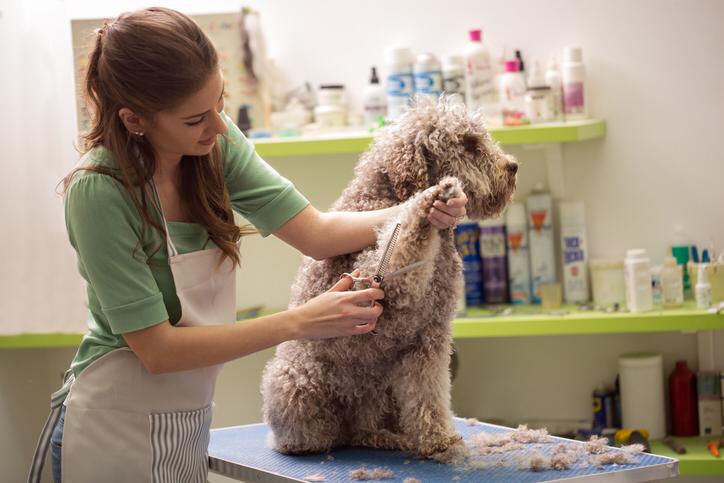
A Doodle’s welfare is fundamentally tied to its coat maintenance, which is an intense, lifelong commitment due to the unique texture that traps dead hair. Ask the breeder to provide a practical demonstration or detailed description of where mats most commonly form, this is typically in hidden, high-friction areas like the armpits, behind the ears, at the tail base, and around the hocks. They should recommend specific, high-quality tools, such as a metal greyhound comb and a slicker brush, and provide a clear cadence for professional grooming (usually every 6-8 weeks) and daily or weekly home maintenance. Find out if they start puppies on table handling for comfort and exposure to a high-velocity dryer, as these foundational experiences reduce fear and stress at the groomer later on. A great breeder ensures you are fully prepared for the ongoing work of coat care, not just the cute photo on pickup day.
7. What veterinary care do puppies receive before going home?
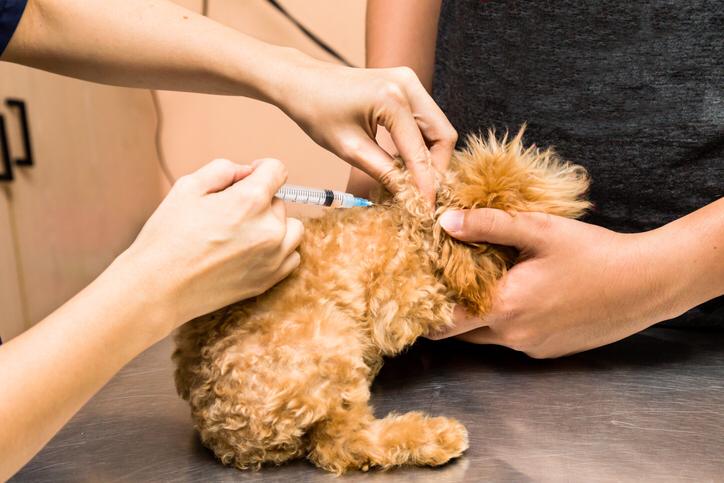
Transparency in veterinary care is a non-negotiable sign of an ethical breeder. You should receive a detailed, written schedule of all medical interventions. Confirm the puppies have a regular deworming schedule, with documented dates and the medication used. The breeder must also perform fecal checks to ensure internal parasites have been cleared, as a dewormer doesn’t kill all types of worms and coccidia. Ask for a record that includes the specific date and vaccine lot numbers for all core vaccines they have received. A professional health certificate signed by a licensed veterinarian is required in many states for puppies being sold. Finally, the puppy should have a microchip ID implanted. Your take-home folder should contain all these vet records, a detailed diet and feeding schedule, a potty/sleep routine, and a clear timeline for the next series of core vaccine boosters you must administer.
8. What’s in your contract (Health Guarantee, Returns, S/N)?

Before you put down any deposit, you must read the entire contract to ensure it protects both you and the dog. A realistic, ethical contract represents a two-way commitment. Look for a robust health warranty that covers congenital or life-limiting genetic defects for a reasonable period, often two years. Critically, the contract must include a lifetime take-back or rehoming clause, meaning the breeder commits to helping the dog at any point in its life should you no longer be able to keep it, this prevents their dogs from ending up in shelters. Regarding spay/neuter terms, ensure the required timing aligns with modern veterinary advice, which often recommends waiting until the growth plates close (around 12-18 months) to allow for proper skeletal development. Be extremely cautious of contracts with overly restrictive clauses, such as those that void the guarantee if you switch kibble brands or forbid you from speaking honestly about your experience.
9. How many litters do you produce, and where are dogs housed?
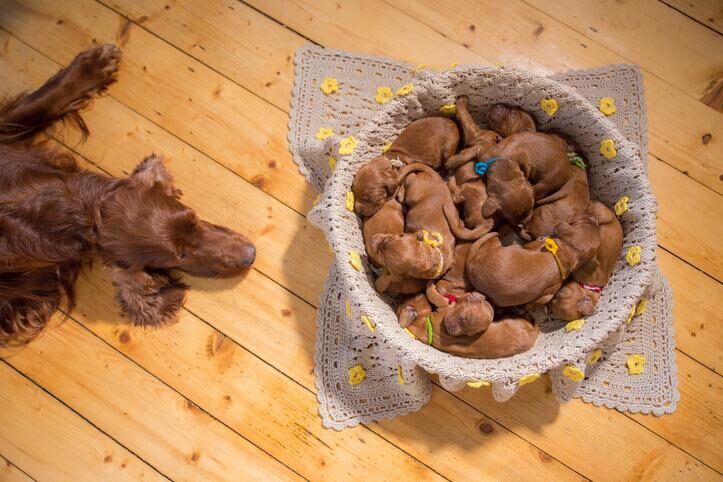
The hallmark of a quality program is a commitment to humane, manageable numbers. Ask directly about the volume of litters they produce annually; very high numbers can indicate a commercial operation or a “puppy mill” environment disguised by social media polish. The breeder must be willing to show you the living spaces, the designated whelping area, and the daily enrichment zones for the adult dogs and puppies. Breeding dogs, even if they have multiple, should be treated as family members, either living on-site or housed in carefully vetted guardian homes, not stacked in isolated kennels with limited human interaction. If a visit isn’t possible, request a live, unedited video walkthrough that shows the daily conditions. A clean, bright, and calm environment where dogs are relaxed and well-socialized is the key indicator of an ethical program, far outweighing any polished sales literature.
10. How do you screen and support buyers after pickup?

The relationship with a responsible breeder is a partnership that extends for the life of the dog. Ask for the specifics of their screening process: do they ask about your work schedule, home environment, previous dog experience, and expectations? Good breeders invest as much time interviewing you as you do interviewing them. Post-pickup, they should offer lifetime counsel and support, including check-ins, being a resource for common questions, and a clear escalation path should training or behavioral issues arise. They should also provide access to a community, such as a private Facebook group, and recommend high-quality, relevant training resources. A breeder who considers the transaction complete the moment the money is paid and vanishes is merely a salesperson. You are looking for a dedicated coach and partner in your dog’s journey, not just a cashier.
12. May I speak to recent buyers and your veterinarian?

References are a crucial, non-negotiable step in your due diligence. A reputable breeder will happily provide contact information for several recent buyers, ideally from the past year, and the name and phone number of the local veterinarian who provides ongoing care for their dogs. When contacting past buyers, ask not only about the dog’s health and temperament but also about the quality of the breeder’s support after pickup and if there were any unexpected surprises (positive or negative). Speaking with the vet can confirm that the breeder is a consistent client who adheres to professional care standards and that their dogs are up-to-date on necessary screenings. If a breeder refuses to provide references or pressures you to leave a deposit immediately, it is a definitive red flag and you should walk away.
13. What training do you start, and what should I continue day one?
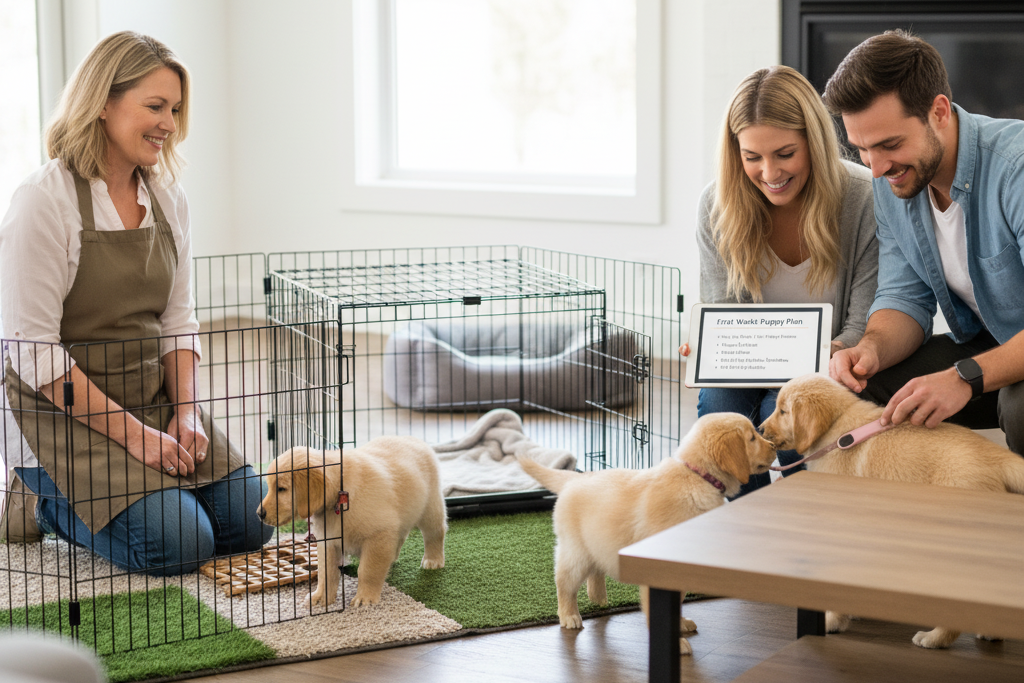
A prepared puppy starts learning immediately, and the breeder should provide a head start in key areas. Ask for specifics, such as whether the puppies take regular crate naps, show recognition of their names, participate in startle-recovery games, are confident on various walking surfaces, and have had any introduction to a leash and collar. The breeder should provide you with a clear, concise first-week plan for your home. This should detail the crucial potty schedule (when they wake up, after eating, after playing), the overnight routine for a successful first few nights, and a suggestion for a minimum of two very short (5-10 minute) structured training sessions per day. A puppy that has been consistently exposed to structure and gentle handling from the breeder will integrate into your life much faster and avoid many of the common behavioral headaches of a “blank slate” new dog.
Bringing a Doodle into your family is an exciting, life-changing decision. By using this list of questions, you’re not just interviewing a seller, you’re screening for a lifelong partner in your dog’s journey. Your diligence now will pay off in years of happiness with a healthy, stable, and well-adjusted companion.
This story 13 Crucial Questions to Ask Your Doodle Breeder was first published on Daily FETCH


